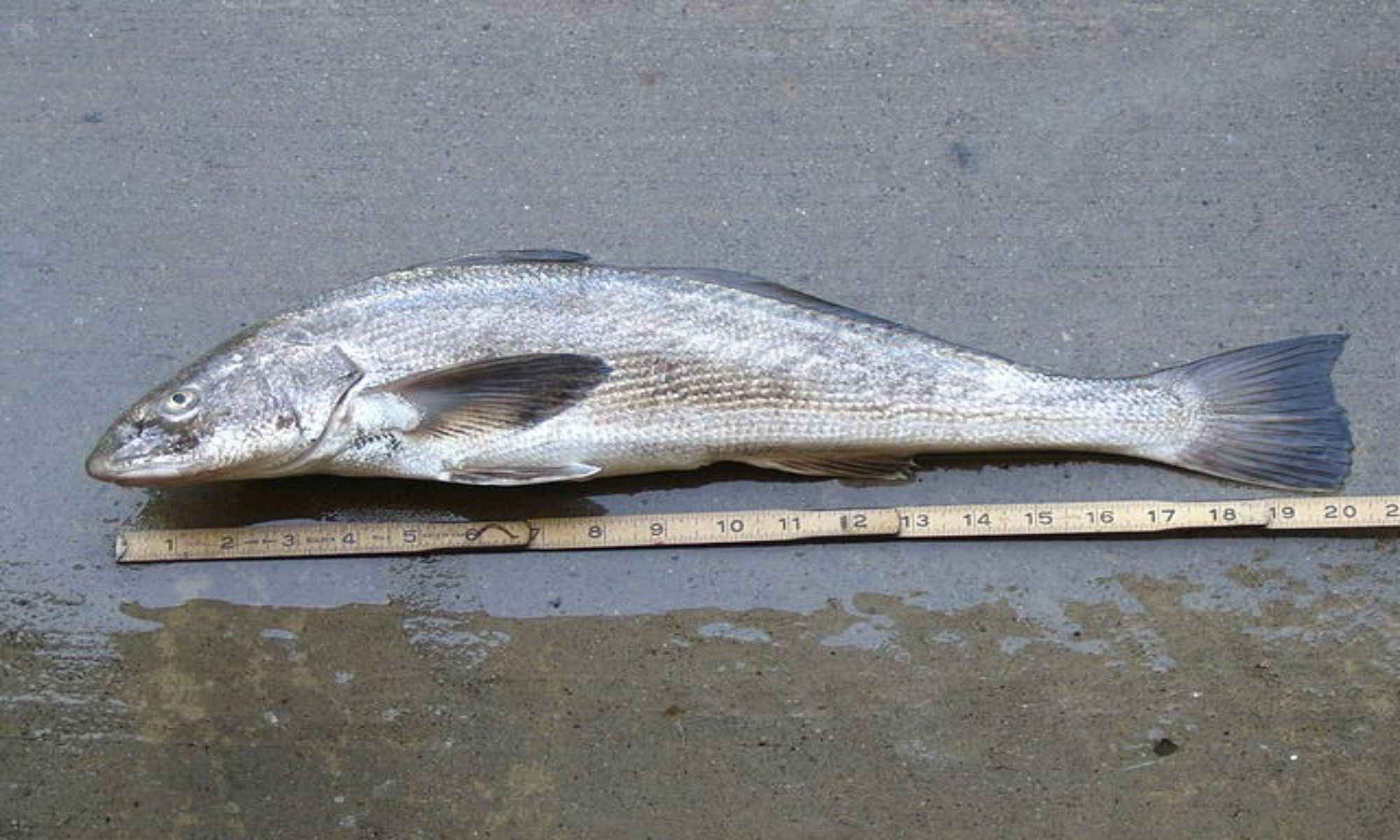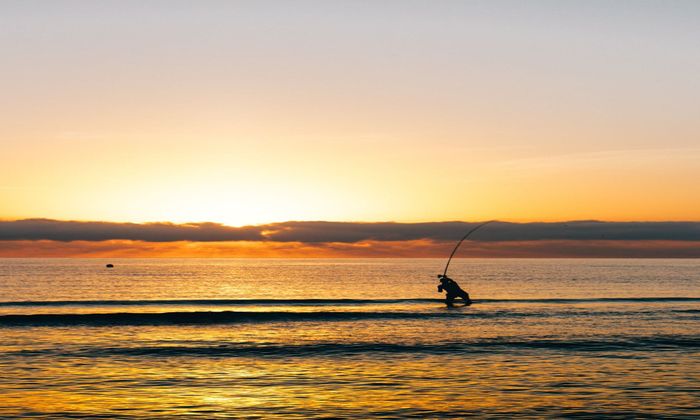The Best Way to Fish for Corbina
If you want to target California's most prolific coastal fish, the corbina, here's a quick guide that'll help you get started.

The California corbina (scientifically: menticirrhus undulatus) is one of California’s most prolific coastal fish species. They belong to the croaker family and spend most of their time hunting prey in shallow water. You can spot them by looking for their dorsal fins breaking out the water’s surface. This is why the Pacific coast in many of Southern California’s beaches offers fantastic corbina fishing. In this guide, we’ll show you how to effectively target these amazing game and sport fish.
How to Identify Corbina
If you’re out surf fishing on a Pacific coast beach, you might spot a corbina’s silver and bronze humped backs protruding from the shallow shore break in only inches of water. They move with the water to the shore to feast on sand crab and other bait before receding with the wave. Though you can easily spot these fish, they are still aggressive fighters. But it’s worth targeting corbina because they make for a tasty meal and are one of the most elusive species you can reel in from the surf.
Corbina are also known as California kingcroaker, whiting, kingfish, bean, bagre, and corb. Their cylindrical bodies are dark metallic blue or sooty gray with white undersides. You might mistake a corbina with a yellowfin croaker if unfamiliar with how they appear. You can distinguish a corbina because its head should be longer and more triangular. And obviously, it shouldn’t have any yellow coloration like its cousin. These surf fish can grow up to 23 inches in average length and can live up to 2 to 3 years.

Corbina Habitat
The surf fish naturally occur between the Gulf of California in Mexico and Point Concepcion in California. If you want to go where they are most abundant, head to areas in Southern California. California corbina like being in flat and sandy areas where they can find plenty of bait like sand crabs. They are surf fish that often ride the incoming high or low tide to root around for morsels of what they can eat.
Corbina Fishing Techniques
There are multiple methods you can use to target these hard-fighting fish. Here are some of the best ways to fish for corbina:
1. Surf Fishing

Corbina will scour highly shallow water to look for sand crab and clams. Despite being in an accessible habitat, they are known for being elusive because they have inconsistent bite patterns. Sometimes they’ll timidly nibble at your bait without entirely swallowing your hook, and other times they will slam your hook, challenging you for a thrilling battle!
2. Sight Casting
Because corbina have inconsistent bite patterns, sight casting with hook sets is a good way to gauge if you’ve landed a fish. The best way to set up your hook is to wait until you feel several taps in a row and start to feel the weight of your target pulling.
You should also be more careful about not spooking many fish cruising the surf (especially in the summertime.) You can use polarized sunglasses to spot the fish farther away without obstructing reflections and glares to gauge your casting distance so you won’t scare them.
The key thing to remember about sight casting for corbina is that you should cast before them. Predict where they’ll swim to so you’ll know that they’ll see your bait or lure. If possible, cast where and when a wave is about to break because it can help mask the sound and vibration of your weight hitting the sand.

3. Baitcasting
A light-action spinning rod and a reel spooled with a six to eight-pound test line can have you all ready to fight and land corbina. These fish don’t particularly line shy, but it helps to have a lighter fishing line that won’t give them a chance to be spooked.
Knowing what bait you should use should be dictated by their usual diet. California corbina’s favorite foods include sand crabs, mussels, clams, and bloodworms. The most effective natural bait is freshly caught sand crabs. They’re also the most accessible and economical because you can find them right at your feet! You can also use cut-up bait, shrimp, and squid. Use small patterned flies or tiny plastic grubs if you want artificial lures.
Drift fishing and saltwater jigging are other methods you can use to catch corbina.
Corbina Fishing Season
The prime fishing season for corbina generally occurs between the start of May and the end of September. In the winter, they retreat to deeper water that would be warmer during that season.
Eating Corbina
Corbina’s white meat tastes great. It’s one of the cleanest white fish you can catch in the surf after the California halibut. They have white, flaky flesh that pairs well with butter, lemon, and herbs. You can also beer-batter and fry them. You can look up more corbina recipes online next time you have plenty of catches.



